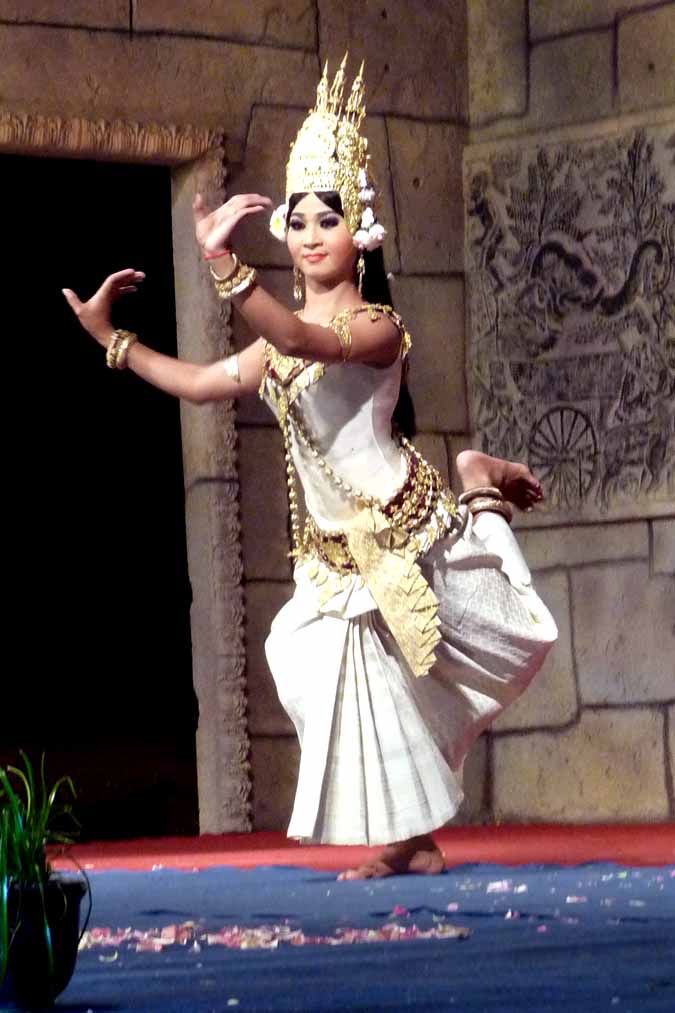Apsara Dance
|
|
Apsara Dance is the indigenous ballet-like performance art of Cambodia. |
|

|
|
It is also known as Khmer royal ballet, Khmer classical dance, or Cambodian court dance. In 2003, UNESCO declared the dance a "Masterpiece of Oral and Intangible Culture". |
|

|
|
Apsara Dance is connected to the traditional dance practiced in the courts of the Angkorian monarchs, which was inspired by the mythological court of the gods and from its celestial dancers, the Apsaras. |
|

|
|
Khmer classical dancers use stylized movements and gestures to tell a story. |
|

|
|
Aspara dancers dance with a slight smile. Like mime, they do not speak or sing. |
|

|
|
Apsara is also a type of character performed by the dancers. |
|

|
|
Apsara Dance performance combines soft movement with loud, traditional Khmer music. |
|

|
|
Until recently, Apsara dance was performed solely for the benefit of the upper class, and particularly for the king and to honor the gods. |
|

|
|
Khmer dancers' training start at a young age flexible enough so they can bend their hands and feet in extreme positions. |
|

|
|
Some dancers can bend their elastic fingers backwards almost to the wrist. |
|

|
|
The gestures of their hands and feet convey different thoughts and concepts. The position of the arm, and the position of the hand relative to the arm can also affect their meaning. |
|

|
|
The gestures are unique to the character or concepts being played such as love and peace. |
|

|
|
A finger pointing to the sky means "today"; arms crossing over the chest means "very happy"; and the left arm stretching out behind the dancer’s right hand held up before the chest with three fingers up and index finger touching the thumb depicts the Nāga - the 7-headed snake. |
|

|
|
Apsaras appear as decorative motifs on pillars and walls in the stone bas-reliefs of the Angkorian temples in Cambodia. Many can be found in Angkor Wat. |
|

|
|
The apsaras represent female spirits of the clouds and waters in Hindu and Buddhist mythology. In English they can be translated to "nymph," "celestial nymph," or "celestial maiden." |
|

|
|
Apsaras are beautiful, supernatural women. They are youthful and elegant, and proficient in the art of dancing. They are said to be able to change their shape at will. |
|

|
|
Dancing apsaras on motifs in the temple are waiting to serve the afterworld. |
|